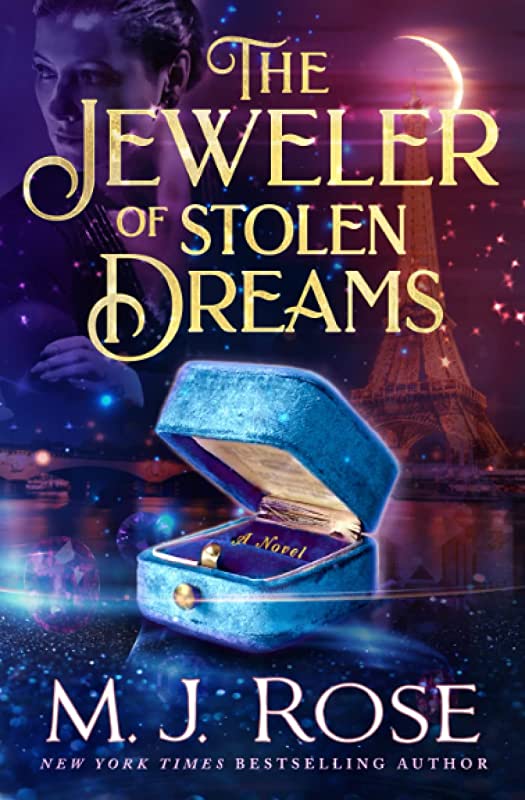

“Only one thing saves you, and that is not losing sight of beauty.”
Paris, 1942. Suzanne Belperron is known as one of the most innovative jewelers of her time. Elsa Schiaparelli and the Duchess of Windsor are just two of her many illustrious clients. What no one knows is that Suzanne and her dear friend, American socialite Dixie Osgood, have been helping transport hundreds of Jewish families out of France since the war began. But now, the war has come to Suzanne’s front door—the Nazis have arrested her business partner and longtime lover, Bernard Herz.
New York, 1986. Violine Duplessi, an appraiser for a boutique auction house, is summoned to visit the home of Paul Osgood, a scholarly lawyer and political candidate who aspires to take over the Senate seat of his recently deceased father. Paul has inherited everything inside Osgood Manor, from the eighteenth-century furniture to the nineteenth-century Limoges china. But a vintage Louis Vuitton trunk is what calls to Violine, with the surprising but undeniable thrum of energy that can only be one thing: the gift passed down to her by La Lune, the sixteenth-century courtesan.
Since childhood, Violine has been able to read an object’s history and learn the secrets of its owners by merely touching it, but she silenced her psychometry when it destroyed her last relationship. Why has it returned now?
While inspecting the trunk, she senses it holds a hidden treasure and finds a hoard of precious jewels that provoke nightmarish visions and raise a multitude of questions. Who owned these pieces? Why were they hidden inside the trunk? Were they stolen? Could their discovery derail Paul’s campaign and their burgeoning attraction to each other?
So begins a search that takes Violine to Paris to work with the Midas Society, a covert international organization whose mission is to return lost and stolen antiques, jewels, and artwork to their original owners. There, Violine will discover both her and Paul’s surprising connections to the trunk—and to Suzanne Belperron, who silently and heroically hid an amazing truth in plain sight.
Told through Violine’s first-person account and Suzanne’s diary entries, The Jeweler of Stolen Dreams is a riveting story of magick, mystery, romance, and revenge. Inspired by the real-life legend Suzanne Belperron, it marks yet another masterpiece by New York Times and Wall Street Journal bestselling author M.J. Rose.
Excerpt: The Jeweler of Stolen Dreams
A captivating tale of two passionate women separated by decades but united by a shared vision. One, the famous jeweler Suzanne Belperron, fighting to protect her company and rescue the man she loves. The other, a young auctioneer whose exceptional gifts reveal a secret that endangers her very life.
New York Times bestselling author M.J. Rose is back with a sweeping and seductive historical fiction—THE JEWELER OF STOLEN DREAMS. I’m thrilled to share a sneak peek below!

Suzanne Belperron
November 2, 1942
Paris , France
I hear a commotion happening outside in the street and am tempted to go to the window and see what is going on. Perhaps it’s a simple altercation. A shopkeeper arguing with a supplier? A drunk causing havoc? Or worse? Because there is worse out there.
But I do not budge from my seat. I draw the top curve of the bombe-style ring I am designing for Madame Tilot. It will have two rows of old, round, mine-cut diamonds, a row of Burmese channel-set rubies, and then two more rows of diamonds. The ring will sit on her pinky and look elegant. It will complement her grace and highlight her privilege.
More noise barges in through the open window. I take a breath and keep working. Dipping my sable brush into a jar of water, I stroke it across the zinc-white dollop on the glass plate I use as a palette.
I paint a small white circle representing a round diamond. And then another. And a third. Since I first learned how to illustrate jewelry at school when I was fourteen, I have loved this process. Seeing an idea rendered in two dimensions is the first step in bringing it to life. Gouache on light gray cardstock. Sharp lines to delineate facets. Highlights to suggest shine.
I paint another diamond, knowing this is all I can do right now. What I must do. As young as I was during the last war, I learned from my teachers that only one thing saves you, and that is not losing sight of beauty. Be it watching a butterfly flit from flower to flower or studying a single autumn maple leaf, beauty has the power to keep your soul from shriveling, dying, and leaving you nothing but an empty, ugly husk.
Finished painting the first two rows of diamonds, I mix a small dab of cobalt into a larger one of crimson, study the shade, and then begin to fill in a row of rubies.
I imagine this bijou will perfectly balance Madame’s slender finger. The stepped rows of gems will complement her angular bone structure, and the color of the gemstones will work well with her auburn hair. I can’t help but smile, thinking of how, at the perfect angle and in just the right light, the rubies will flash their sensual, seductive secret—streaks of hot pink.
A sound makes me jump. Is it a car backfiring? A gunshot? In our crazy world, it could be either. Looking out the window, I see nothing, then glance back at the drawing. My hand must have jerked when I heard the noises outside. The paper now has an ugly red zigzag that looks like a wound.
I shut my eyes and try to breathe through my anxiety. I must not let my fear get the best of me. I’ve been so disciplined all my life, I can be about this, too. So many people count on me: those here at the atelier, at the Groënéet Darde workshop, where jewelers actualize my designs, and at my stonecutter, Adrien Louart’s, studio. How can I let all those men and women down?
I am a diamond. They cannot break me.
I force my attention back to the drawing. I need to start again; this one is ruined. I wish I could focus the way I used to before the horrible war. Back then, what was there to get in the way of work? What were my greatest problems? A design that failed? A client overdue with a bill? Not even the changes in my relationship with my husband had prevented me from being able to concentrate. A romance that became a marriage that disintegrated and then re-emerged into a solid friendship—separate bedrooms, shared dinners with friends, understanding each other—wasn’t a tragedy. It was a metamorphosis.
But now, my concentration is as fragile as a butterfly wing. France is a country occupied by monsters, who take good, decent men and women and children away from their homes and lock them up. Kill them for no reason other than the accident of their birth.
Sometimes, as I sit here day after day and focus on designing a ring or a bracelet or a brooch, I think I’m going to lose my mind. Every time I see a paddy wagon rumble down the street, I freeze. Every time the radio has a report of hostages shot, I worry. When I read about resistance members taken into custody or that there has been another roundup of Jews, I hold my breath as I scroll through the names. Will it be someone I know? Care about? Our situation paralyzes me because, while I am relatively safe, so many of my friends are not. The man I love is not.
Subscribe for Updates:
















 by
by